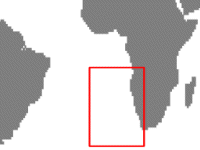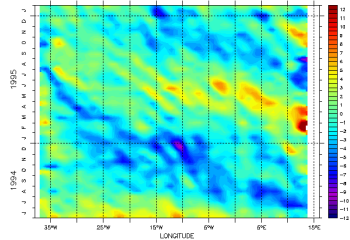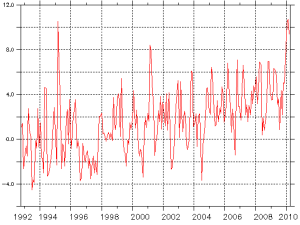Benguela current, an Atlantic Niño ?
Lively data, november 30, 2010

The Benguela current is an eastern boundary current, belonging to the South Atlantic subtropical gyre. It flows along the southwestern African coast, from the Cape of Good Hope, moving northwestward and joining the Angola current. In its southern part, it is characterized by a coastal upwelling with cold-rich waters while in its northern part, it is dominated by warmer tropical waters.
Anomalous atmospheric conditions in the western tropical Atlantic (weakening of the South East trade winds off Brazil) can caused the shifting of the Angola-Benguela front further south, causing the intrusion of warm waters. Because of the similarity to the El Niño phenomenon in the Pacific Ocean (ENSO), this warm event in the South Atlantic Ocean have been named Benguela Niños. These events suppressed the upwelling and caused high rainfall over Namibia. They are less intense and less frequent than ENSO.
One of this event Benguela Niños occurred in 1995. At a given point (11°E/18°S), a long time-serie over all the Delayed-Time period, highlights this positive sea level anomaly : more than 10 cm above normal on March 1995 (austral autumn).

![]() Use the Live Access Server
Use the Live Access Server





